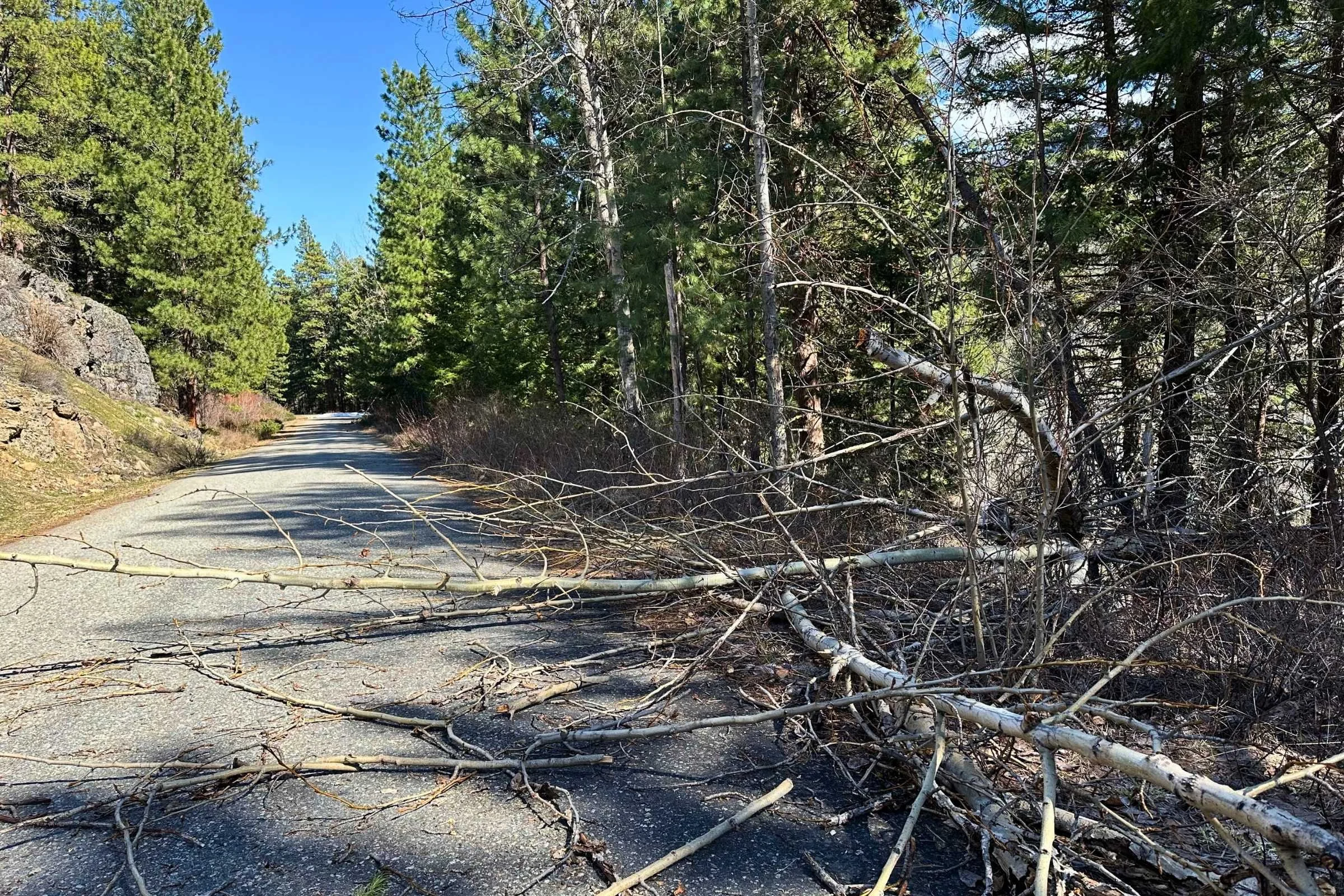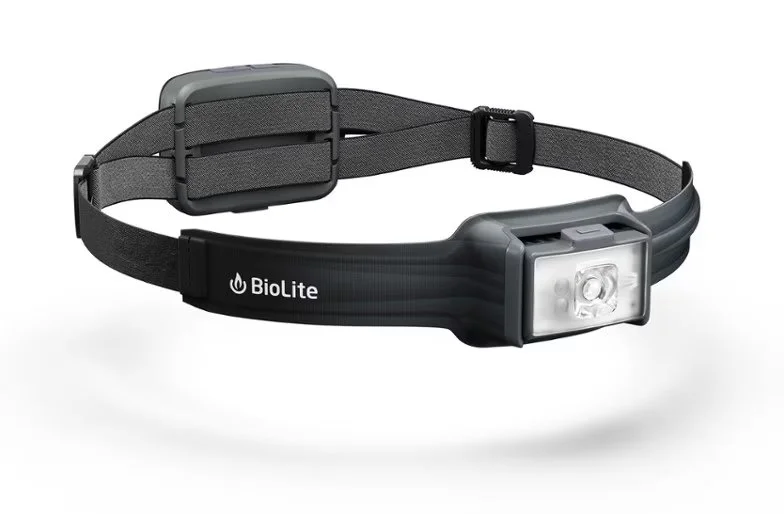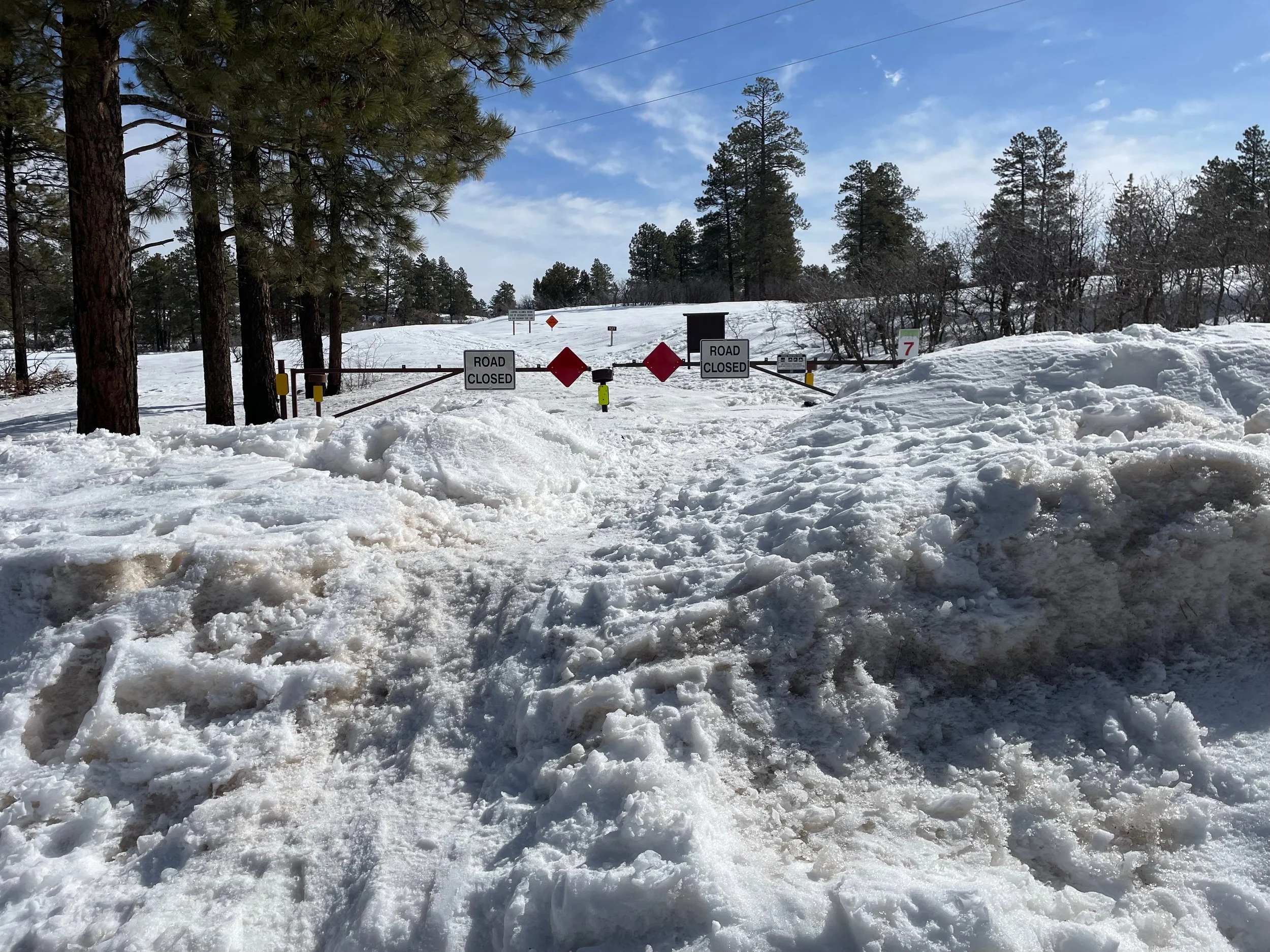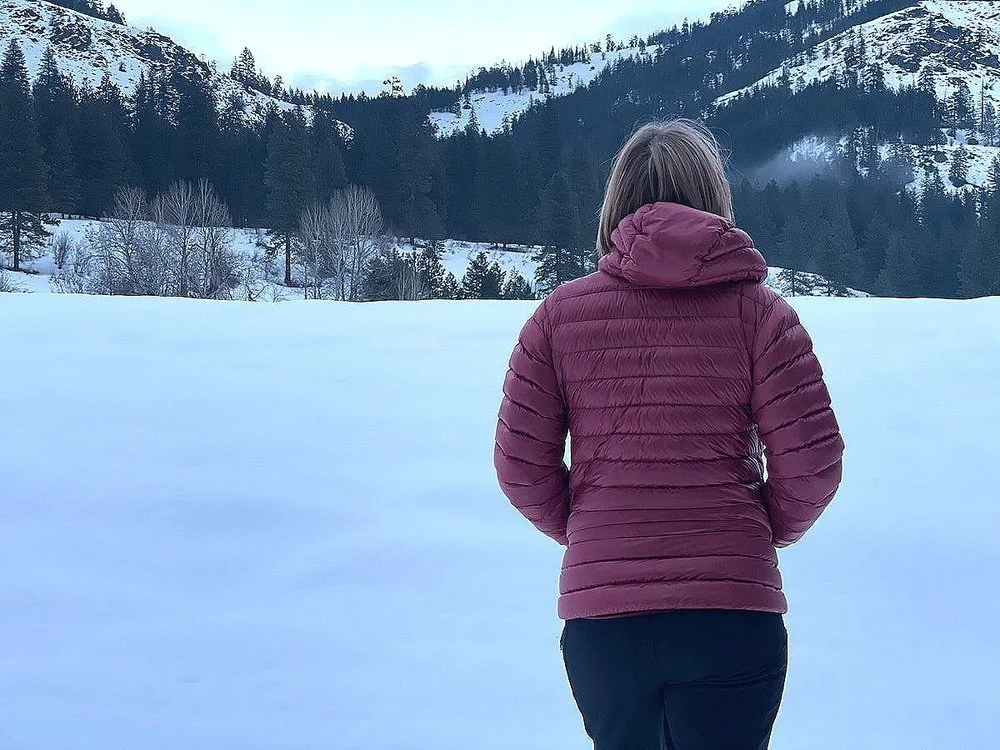Backcountry Road Travel: Recovery and Emergency Kit List
What to have in your car when you leave the pavement
August 1, 2025
Home > Gear lists
Being self-sufficient in the woods really pays off. Backcountry tows are expensive, and may not even be covered under auto club plans (most basic plans are limited to 10 miles, while premium plans can go up to 200 miles, but usually not on gravel or dirt roads).
The difference between an adventure story and a survival situation often comes down to what you've packed in your car. Unlike highway travel, where gas stations, repair shops, and cell towers are never far away, backcountry roads demand a different level of self-reliance. You become your own first responder, mechanic, and survival expert.
If you regularly head out onto unpaved roads, having the proper gear can make the difference between a minor setback and a major (expensive) emergency. Here's everything you need to know about building a backcountry car kit that could save your trip, your money, or even your life.
Pro tip: don't skimp on this stuff, price-wise. There's a lot of junk out there, and you don't want it to fail when you have no other alternatives. Generally, you get what you pay for with this type of equipment.
Car and Truck Recovery List
| RECOVERY GEAR ITEM | OUR CHOICE |
|---|---|
| ALL SEASONS | |
| Car Battery Jump Starter | NOCO GBX45 UltraSafe Powerbank |
| Tire Inflator Air Compressor | NOCO Air10 UltraFast Compressor |
| Full Size Spare Tire | Compatible with your car |
| Tow Strap | Rhino USA Recovery Straps |
All Seasons
Here's what we recommend carrying year-round in your car or truck for backcountry travel.
Car Battery Jump Starter
I came back to the trailhead after a 5-day backpacking trip and my car wouldn't start. Turns out I left a dome light on (must have hit it with my backpack as I was taking it out). I waited around for hours for someone else to show up who also had jumper cables.
That's why I always carry a car battery jump starter now – even in the city. They're compact, inexpensive, and stay charged for months. I've jumped my own car, friends' cars, and my neighbor's car.
Most models have USB charging ports as well, so if you're out of phone battery at the trailhead, you can also charge your phone.
NOCO GBX45 UltraSafe Powerbank
Tire Inflator Air Compressor
A portable air compressor serves two purposes. First, you can use it to inflate a flat tire (or top off the spare before you put it on).
But it's also great to have if you get stuck in sand and need to let some air out of your tires for extra traction (see below for other traction ideas). Once you're back on more stable ground, you can pump your tires back up with the air compressor.
NOCO Air10 UltraFast Compressor
Recovery Boards
Recovery boards are rigid panels used to get your car out when you’re stuck in soft or slushy terrain. They create a solid surface under your tires when you're stuck in:
Deep sand
Mud
Snow
Loose gravel
Wet grass
You wedge them under the stuck tire, and the raised treads on the boards give your tires something to grip. As you slowly accelerate, the vehicle climbs onto and drives across the boards, gaining enough momentum to reach solid ground.
Some reasons to carry recovery boards:
Self-recovery: You can get unstuck without another vehicle to pull you out
Lightweight: Most are light enough for one person to handle
Won’t damage your car: Unlike putting branches or rocks under tires, these won't damage your vehicle
Versatile: You can use them as a shovel or a jack base on soft ground
You may have to dig a little bit to get them properly placed, but then the boards will give you the traction you need to get out.
Maxtrax MKII Recovery Boards
Full-Size Spare Tire
Those donut spare tires that come standard with most cars aren't meant for off-road use. They have very limited traction, and rocks and gravel will eat them up incredibly fast. It's best to carry a full-size spare tire that matches the rest of your tires, especially if you have 4-wheel drive.
Tire Repair Kit
Backroads are not where you want to be running a donut-shaped spare tire. Tire puncture repair kits are relatively inexpensive but essential.
Bonus – you don't have to take the tire off the car, which makes it easier than putting on a spare.
It comes with instructions, but I highly recommend watching the video on the product page.
GlueTread Complete Off-Road Tire Repair Kit
Tow Strap
Tow straps are heavy-duty fabric straps used to pull cars, primarily for recovery situations.
I've actually seen a situation where a truck was stuck in the mud and another truck owner offered to pull him out – but neither driver had a tow strap.
Tow straps are best for slow, controlled pulls on firm ground as well as short-distance emergency towing.
They're inexpensive but incredibly useful. When you need one, you really need one!
Make sure you check the strap's weight rating against your vehicle's weight before purchase.
Rhino USA Recovery Straps
Saw
I took a quick overnight loop last summer, but I had to close the loop by walking a brief section of Forest Service road back to my car from one trailhead to another. As I was walking down the road, I came across a newly fallen tree, right across the road. How were all of those cars at the trailhead going to get out? I hope one of them had a saw! I was pretty happy to be on foot at that point.
Bonus – you can also use it to do some ad hoc trail maintenance!
Silky Bigboy 2000 Outback Folding Saw
Hydraulic Jack / Jackstand
My partner got a flat in the Gifford-Pinchot National Forest on a really remote road. He was alone. He told me later that as he was laying there in the dirt, trying to jack up the car with the stock car jack on really soft ground, he thought to himself I hope the car doesn't fall on me.
If it's wet or raining, you might have trouble jacking up your car with the stock car jack as well. Dirt roads can turn soft and muddy with just a little precipitation.
The wider base of the hydraulic jack means it distributes the weight load over a larger area, making it better for soft soil. Compared with a standard, wobbly, flimsy factory jack, it's no contest.
Powerbuilt 2 Ton UniJack
Engine oil
It's good to have an extra quart or two of oil in your car at all times. Gravel can cause oil pan punctures (and AC punctures, ask me how I know).
Why does it seem like the check oil light comes on when you're in the middle of nowhere?
Look at your car's user manual to determine the type of oil your car needs.
Coolant
Overheating happens, especially when your car is carrying heavy loads, towing, or doing a lot of uphill climbing. Coolant is inexpensive, and when you need it, you need it.
Car Maintenance
I'll put in a plug here for just keeping up on your basic car maintenance. Find a good, reliable car mechanic, and, with every oil change, ask them if there's anything they'd recommend fixing. Follow the manufacturer's recommended maintenance schedule. And make sure your tires aren't bald. This is really bad (ask me how I know).
Rechargeable Headlamp
Even if you're not driving at night, you may need to look in places that are not well-lit, such as underneath your car or hood. A good, bright headlamp is essential.
You may already have one in your backpack, but it’s better to have one that's always in your car or truck. I recommend a rechargeable headlamp over one with replaceable batteries. Keep the charging cable with it, so that even if you forget to charge it and it’s dead, you can use your car battery or car jumper battery to charge it up.
BioLite HeadLamp 800 Pro
Downloaded Maps or Handheld GPS
Before you leave, make sure you've downloaded – either to your phone or a handheld GPS – the appropriate maps for the area you'll be in. Make sure you choose a wide enough area so that if you need to find an alternate way out, you have the maps to figure it out.
Important: Pay attention to the map layers you download. For example, in the Gaia navigation app, I'd recommend the following, at a minimum, depending on the season:
USFS Roads and Trails
Cell Coverage
Gaia Overland
Wildfires (Current)
Snow Depth
For more, read our review of the Garmin GPSMAP 67i.
Garmin GPSMAP 67i
Fire Blanket or Fire Extinguisher
If you're car camping and plan on having a campfire or using a portable barbeque, it's essential to have a way to put out a fire that gets out of control. Prepared Hero Emergency Fire Blankets are inexpensive, compact, and easy to use. A fire extinguisher for flammables and electrical equipment will put out a car fire before it becomes a wildfire.
Prepared Hero Emergency Fire Blanket
Kidde Auto Fire Extinguisher
Winter Season
If you're heading into the backcountry in winter, there are a few more items we recommend.
Winter (Snow) Tires
I recently moved to a mountain town with real winters – there's usually snow on the ground from November to April. So I invested in a pair of snow tires, even though my current set was "mud and snow." I didn't realize how much of a difference snow tires would make until I actually used them.
I also didn't fully understand the differences between winter snow tires and regular tires. Yes, the tread pattern is different – winter tires have deeper tread depth and more slots and sipes. Sipes are slits in the tread that bite into ice.
What I didn't realize is that the winter tire's rubber compound is also different. Winter tires are made with a rubber that keeps flexibility in cold temperatures, whereas all-season tires are made to withstand heat on the road. If the tire stiffens up in cold weather, it won't provide as much traction.
Finally, winter tires aren't just good for snow. They're excellent for all winter conditions – cold, wet, slush, snow, and ice.
A huge benefit – you don't have to lay down in the snow to put them on, as you would with tire chains. They're on for the season.
Michelin X-Ice Snow Tires
Tire Cables
If you have winter tires, you (hopefully) won't need tire chains or cables. However, they can get you out of icy situations if you do get stuck.
If you don't have winter tires, you most certainly need some kind of traction device in your car.
This video does a great job of comparing the various types of traction devices on the market. TL;DR, he recommends tire cables/ladders for their performance and ease of installation.
Important: Take the time to find the right size for your tires. Make sure your car has the clearance for tire ladders.
Peerless Chain Passenger Tire Cables
Snow Shovel
After a few nights at a fire lookout cabin, you might come back to a car that's partially buried in snow. A snow shovel makes life so much easier. They're inexpensive and easy to toss in the trunk. More reasons to carry one:
Snow plows often create walls of snow behind parked cars.
Wind can create deep drifts around your vehicle even during moderate snowfall.
Frozen slush can trap your wheels, requiring chipping and digging.
It’s critical to clear a buried exhaust pipe to prevent carbon monoxide poisoning.
Even if you have 4WD/AWD, a shovel is essential. AWD won't help when you're already stuck or high-centered on snow.
Backcountry Access Dozer 2D Avalanche Shovel
Sleeping Bag or Camping Blanket
If worse comes to worst and you're stuck, it's essential that you have a way to keep warm – both during the day and potentially overnight. Keep a sleeping bag or camping blanket in the car for each person.
It doesn’t have to be expensive. Just make sure it's rated for the temperatures you'll encounter at night.
Even if you never need it for an overnight emergency, it could be a lifesaver if you're stuck for just a few hours in extreme cold.
Remember not to store it compressed all of the time, otherwise it may permanently lose its loft and warmth. You can rotate it — keep it compressed in the car for a few months, then take it out and let it decompress periodically at home. Alternatively, you can use partial compression — Use a larger stuff sack that compresses it somewhat, but not to the minimum size.
REI Co-op Trailmade Down Sleeping Bag
Rumpl Original Puffy Blanket
Winter footwear traction devices
If your car gets stuck, you may need to hike to the nearest place with cell coverage. Winter traction devices for your shoes or boots will make the process so much easier.
You can use them for getting unstuck — if you need to dig out your car, push it, or attach chains.
They also help with tire changes or changing a flat on ice without slipping.
The Black Diamond Distance Spikes are the overall winner in our winter traction devices review.
Black Diamond Distance Spike
Warm Clothing
It's a good idea to keep a set of warm, dry clothing in your car in case you get wet or stranded. If you need to hike out to safety, it's much better to start with a fresh set of dry clothing. If you're stranded and need to sleep in your car, extra layers will always be a good thing. Base layers, down jackets, synthetic insulated jackets, fleece jackets, long underwear (men's and women's), and insulated pants are all excellent options for staying warm.
About the author/why you should trust us
Naomi Hudetz is co-founder and director of analytics and digital innovation and leads business strategy and revenue operations for Treeline Review. She brings decades of private sector experience in project management, budget and pricing projection, and long-term business vision, strategy, and goals.
Naomi left her corporate career to pursue her passion for the outdoors. She received the Triple Crown award for hiking for completing the Appalachian Trail, Pacific Crest, and Continental Divide Trails and has hiked numerous other distance routes including the Great Divide Trail across the Canadian Rockies (twice), Grand Enchantment Trail, Pacific Northwest Trail, the Arizona Trail, (most of) the Idaho Centennial Trail, the first known thru-hike of the Blue Mountains Trail, and the Oregon Desert Trail. She recently bikepacked the Great Divide Mountain Bike Route.
She previously served as Treasurer of the American Long Distance Hiking Association-West, and is currently on the board of the Continental Divide Trail Coalition. She’s based in White Salmon, Washington.



















